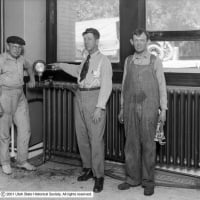Welcome! Here are the website rules, as well as some tips for using this forum.
Need to contact us? Visit https://heatinghelp.com/contact-us/.
Click here to Find a Contractor in your area.
Electric Radiant
Derrick Ellefson
Member Posts: 64
What are the pros and cons to electric radiant heat.
0
Comments
-
perfect for small bathrooms IF there is no boiler to begin with, but otherwise a waste. Good just for the feel of a warm floor but do not heat the rooms...pretty DIY friendly.
TimJust a guy running some pipes.0 -
a good option
depending on you energy costs, of course. Electric radiant can be a resistence cable or mat in or under the floor, or an electric boiler feeding a hydronic radiant system.
I just returned from Minnesota and spoke with a Co-Op power company that offers 3.4/ kwh off peak to residential customers up there. That's a very affordable energy source. Geo is going crazy up there.
So it really depends on what you are planning, properly designed and installed electric cable or mat radiant will provide the same output and comfort as hydronic radiant.
hrBob "hot rod" Rohr
trainer for Caleffi NA
Living the hydronic dream0 -
I got a contrator that wants to use it in the entire house. It is an ICF home. What I worry about is the longevity of it. The best warrant I've seen was 10 years. And a out put of about 50w per ft(170 btu/ft) . I dont know how they control that when I only need about 20 btu/ft. What the contractor wanted was to give the customer is off peak usage. Around here its about .05 off and .21 on. Even at that rate geo is a lot more efficent at the regular rate of .11. I have to meet with the customer this week some time and just wated some ideas. Thanks0 -
Electric radiant
I've seen many large rooms as well as whole houses that use electric radiant for primary heat. You get individual room control. Generally with setback gfci thermostats. With tight construction I think this is going to be used more and more. 0 maintenance. 100% efficiency. No piping losses. Remember a boiler requires electricity to distribute the heat. All the heat goes where you want it. No boiler room needed. As far as longevity-if it gets through the construction phase without damage it should out last you. If it gets damaged it needs to be repaired. Just like pex tubing. Most systems can easily be repaired. The added benefit is if it is damaged it doesn't damage the floor it just stops heating. No fluid to deal with. It should still be designed and installed by a pro. if you expect it to work. Most interior products produce between 10-12watts per sq.ft. of heated area. With electric it is cycled on and off to achieve the floor temp. desired.0 -
Electric radiant
Please check that. No one should be installing a 50w/sq. ft. electric in a residence.0 -
ICF homes typically
have very low heat loads. First things first... do a good detailed heatload calc. You may be surprised to find loads near, or under, 10 BTU/ square foot. Often times lighting and appliance loads warm ICF and SIP homes!
With that in mind cable or mats should easily cover the load.
I agree with the concern about repair-ability of cable or mat in slabs, multiple zones, like hydronic could help should one cable go bad.
While electric systems are near 100% efficient, it's the generation and distribution of the power at @ 33% that makes electricity questionable for a fuel replacement on a large scale. And there are still some dirty, inefficient coal powered plants generating that energy.
Tight, efficient buildings do suffer from the cool floor syndrome. Where the floors run so infrequently to meet the load homeowners notice the floor not being warm all heating season. Makes me wonder if next time a system with no tube near the outside walls, under furniture areas, and load it into the actual foot path space. Cover the load with the interior slab to keep the system running more often.
Next super insulated job I'd seriously consider panel rads in all but the congreation areas (kitchens, dining, living) spaces and bath floor.
hrBob "hot rod" Rohr
trainer for Caleffi NA
Living the hydronic dream0
This discussion has been closed.
Categories
- All Categories
- 86.7K THE MAIN WALL
- 3.1K A-C, Heat Pumps & Refrigeration
- 55 Biomass
- 423 Carbon Monoxide Awareness
- 102 Chimneys & Flues
- 2K Domestic Hot Water
- 5.6K Gas Heating
- 102 Geothermal
- 158 Indoor-Air Quality
- 3.5K Oil Heating
- 67 Pipe Deterioration
- 935 Plumbing
- 6.2K Radiant Heating
- 384 Solar
- 15.3K Strictly Steam
- 3.4K Thermostats and Controls
- 54 Water Quality
- 43 Industry Classes
- 47 Job Opportunities
- 17 Recall Announcements

